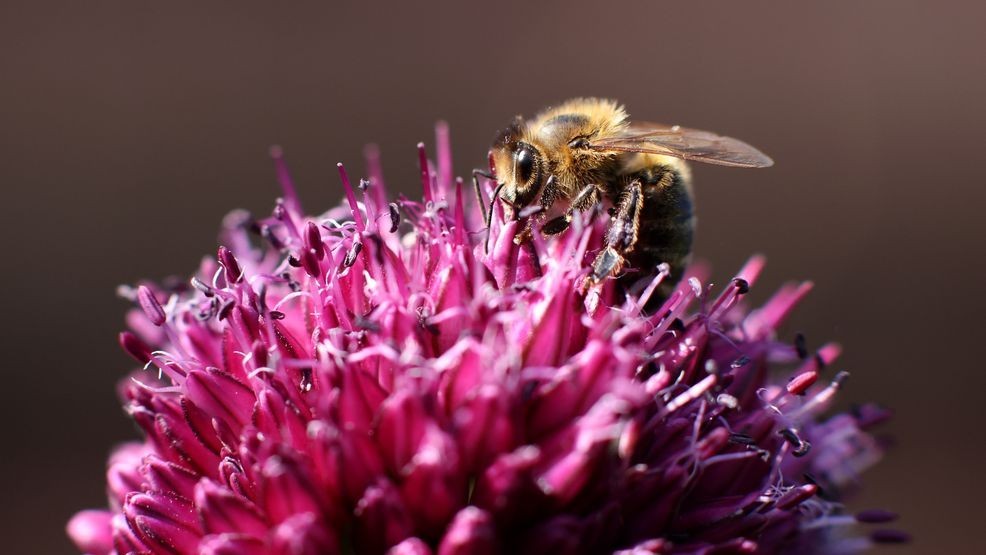If you’re looking to breathe new life into your garden while supporting the ecosystem, it’s time to plant for pollinators.
From bees and butterflies to hummingbirds and beetles, pollinators are essential to both wild and cultivated landscapes — and they need our help. Habitat loss, pesticides, and climate change are among the threats to our all-important pollinators.
One way to help starts right in your garden. And city dwellers, don’t fret. You don’t need a massive yard to make a difference. We spoke to local gardening experts about the best plants for attracting pollinators in the Pacific Northwest, and their answers may surprise you.
Herbs: Pollinator Magnets in Your Edible Garden
Laura Matter, Program Director for Natural Yard Care at Tilth Alliance, says, “The first plant that comes to mind is lavender. It attracts a ton of insects.” Beyond lavender, many herbs in the mint family — sage, rosemary, oregano, basil, and mint itself — are beloved by a range of pollinators including bees, butterflies, moths and hoverflies.
Rosemary has the added benefit of blooming early, often in late winter, giving pollinators a crucial source of food when little else is available. But Matter warns you should be careful with aggressive growers, like mint and oregano, as they can easily take over garden beds if not managed properly.
Matter also highlights the carrot family of plants as excellent for pollinators, especially when allowed to flower. While carrots are biennials and take two years to bloom, other members like dill, cilantro, and fennel flower quickly and are particularly attractive to small parasitic wasps. These wasps aren’t aggressive and play a valuable role in natural pest control.
Native Plants: The Gold Standard for Pollinators
“Native plants are particularly important,” says Susan Melgaard, a Master Gardener with the WSU Extension who has given talks on pollinators for several years. “They’ve evolved here and thrive in our local soil. They are vital for native pollinators, providing ample nectar and pollen for insects and hummingbirds.”
Melgaard recommends native rhododendrons and azaleas, especially in higher elevation areas like North Bend. Native alpine strawberries are another favorite, perfect for replacing grass in parking strips. These plants act as green mulch, suppress weeds, and attract ground beetles, which naturally control slugs.
Colorful Native Annuals and Perennials
Want a burst of color and pollinator traffic? Melgaard recommends native annuals, such as:
Gilia: Bright blue flowers that attract bees.Clarkia: Self-seeds easily and draws leaf-cutter bees, which cut petals to wrap their eggs.Farewell-to-spring: A member of the primrose family that thrives in second-tier garden zones.
For perennials, look for:
Columbine: With its unusual, alien-like blooms, it returns year after year.Geranium robertianum: A delicate pink native geranium.California poppy: Not strictly native, but well naturalized in the region.Douglas Aster: A late-bloomer visited by over 75 species of pollinators, though it can spread quickly. Consider it for pots.
Design for Diversity
The key to a successful pollinator garden is diversity. “All our pollinators — birds and insects — are different anatomically,” says Melgaard. Hummingbirds, with their long tongues, prefer tubular flowers, as do many bumble bees. Native huckleberries offer early spring nectar and attract bumble bees, as do tomato plants later in the year.
“They vibrate at the frequency of middle C,” Melgaard explains. “When they hook onto a tomato flower with their jaws, they vibrate the pollen off.” This behavior, called “buzz pollination,” is crucial for tomato production.
Another pollinator powerhouse is solidago, with bright yellow flowers. “It attracts everything: bees, wasps, flies, butterflies, moths, hummingbirds, and beetles,” Melgaard says. Beetles, she notes, are the planet’s oldest pollinators, dating back to before flowers evolved.
Shrubs, Groundcovers, and Specialty Plants
Native shrubs like Nootka rose, Oregon grape, native hawthorn, and witch hazel are not only beautiful but also provide shelter and food for pollinators and birds. Oregon grape, in particular, is perfect for lower-traffic areas like side yards and produces berries in the fall.
Have a slope that needs stabilizing? Consider heaths and heathers. While not native, they’re naturalized in the Northwest and offer early blooms. For shady spots, try darmera—a three-season plant with bold pink flower umbrellas in spring and colorful fall foliage.
Where to Start
Check out the pollinator pages at The Garden Hotline and the Xerces Society.
For native plants and seeds, check out:
As Melgaard reminds us, “We need to protect pollinators. They keep the ecosystem healthy and reduce the need for pesticides.” With just a few thoughtful plant choices, your yard can become a thriving sanctuary — for you and the creatures that keep our world blooming.
Time to grow your own buzz-worthy garden!
Lisa Jaffe is a freelance contributor for Seattle Refined.
READ MORE | Happy Hummingbird Season: How to attract native Rufous and year-round Anna’s in the PNW
READ MORE | Catch The Buzz: Rainy Day Bees is your ticket to backyard beehives

